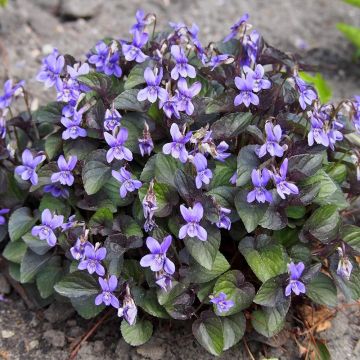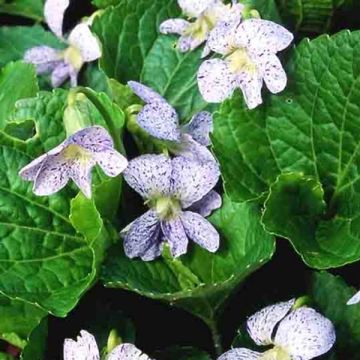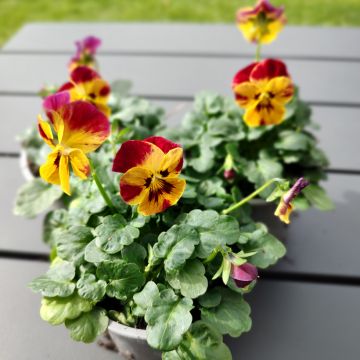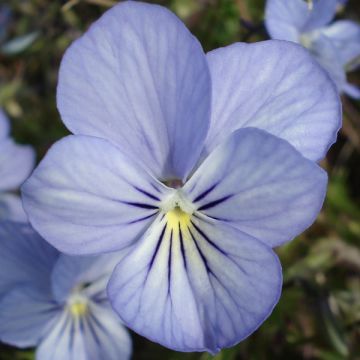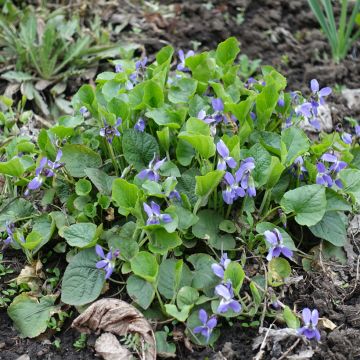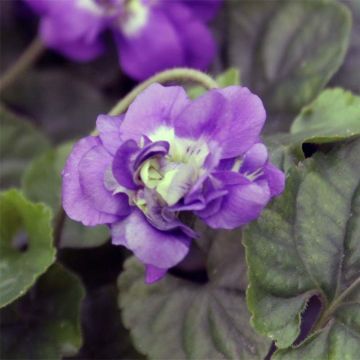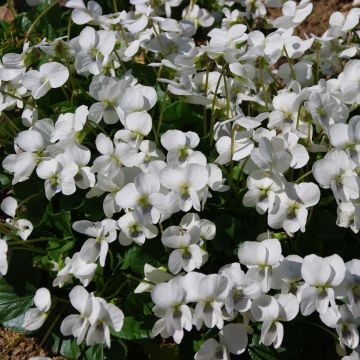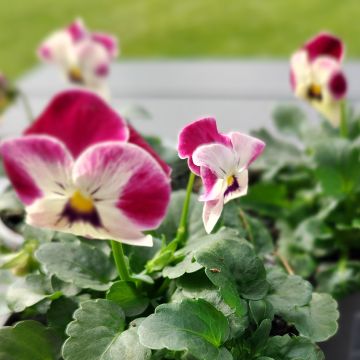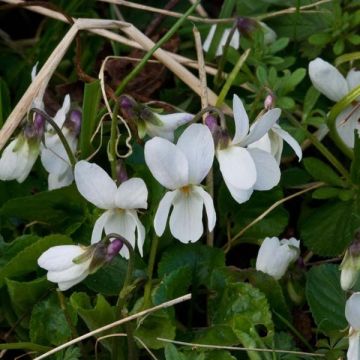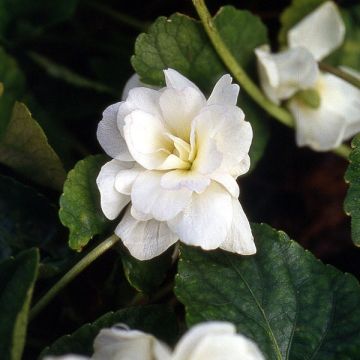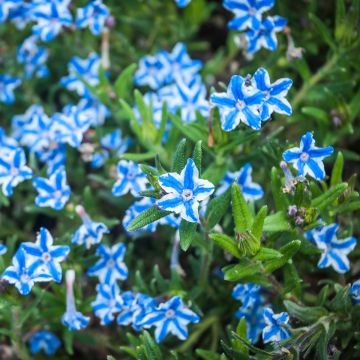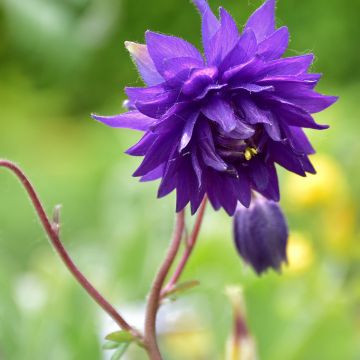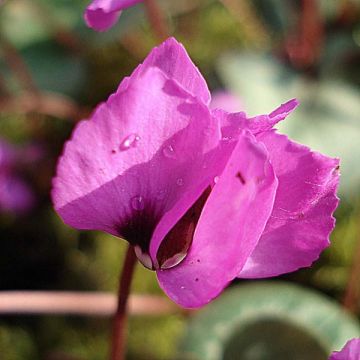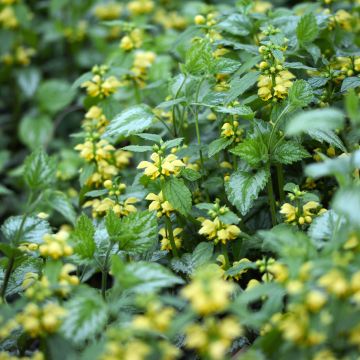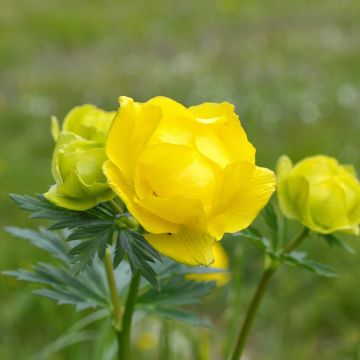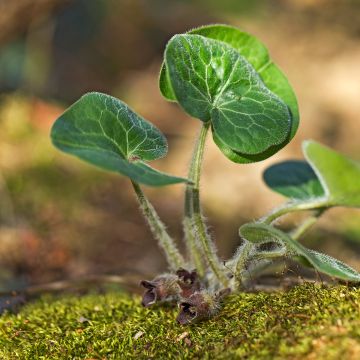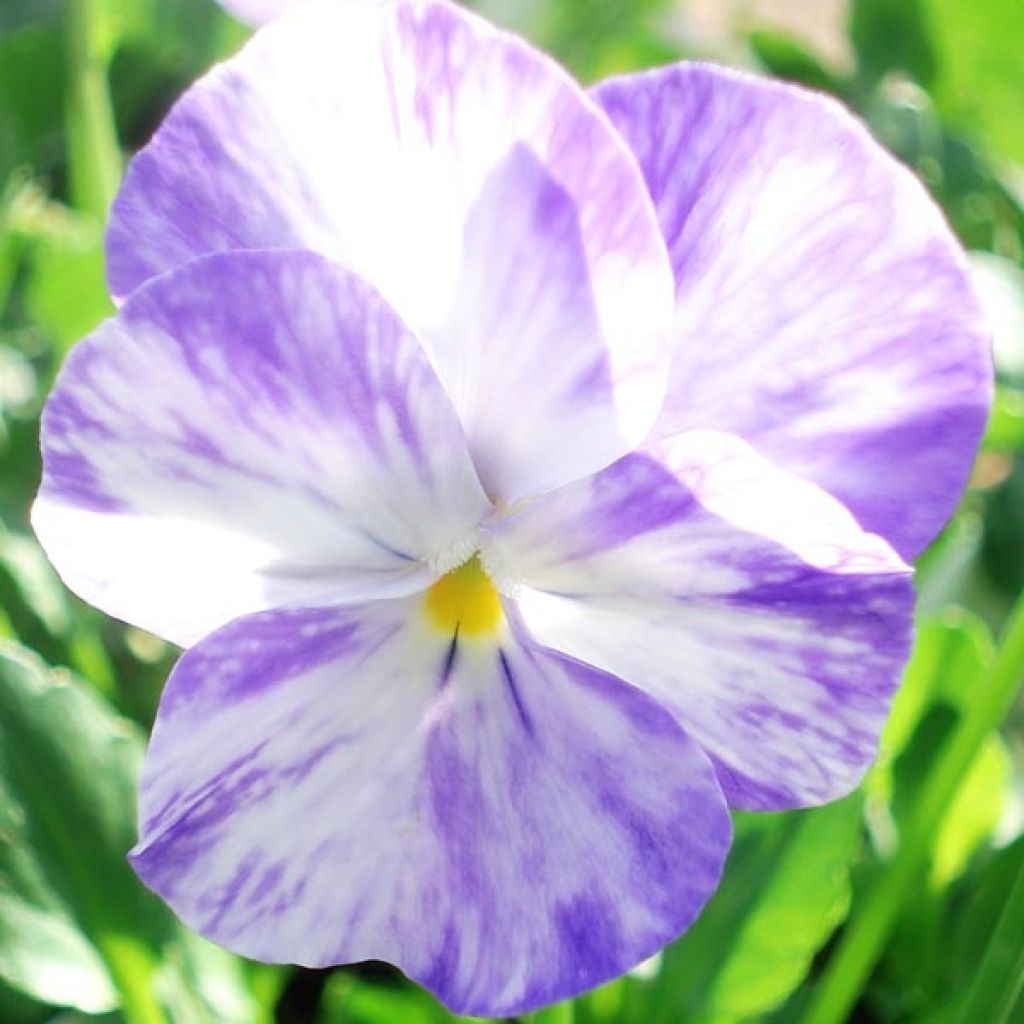

Viola cornuta Columbine
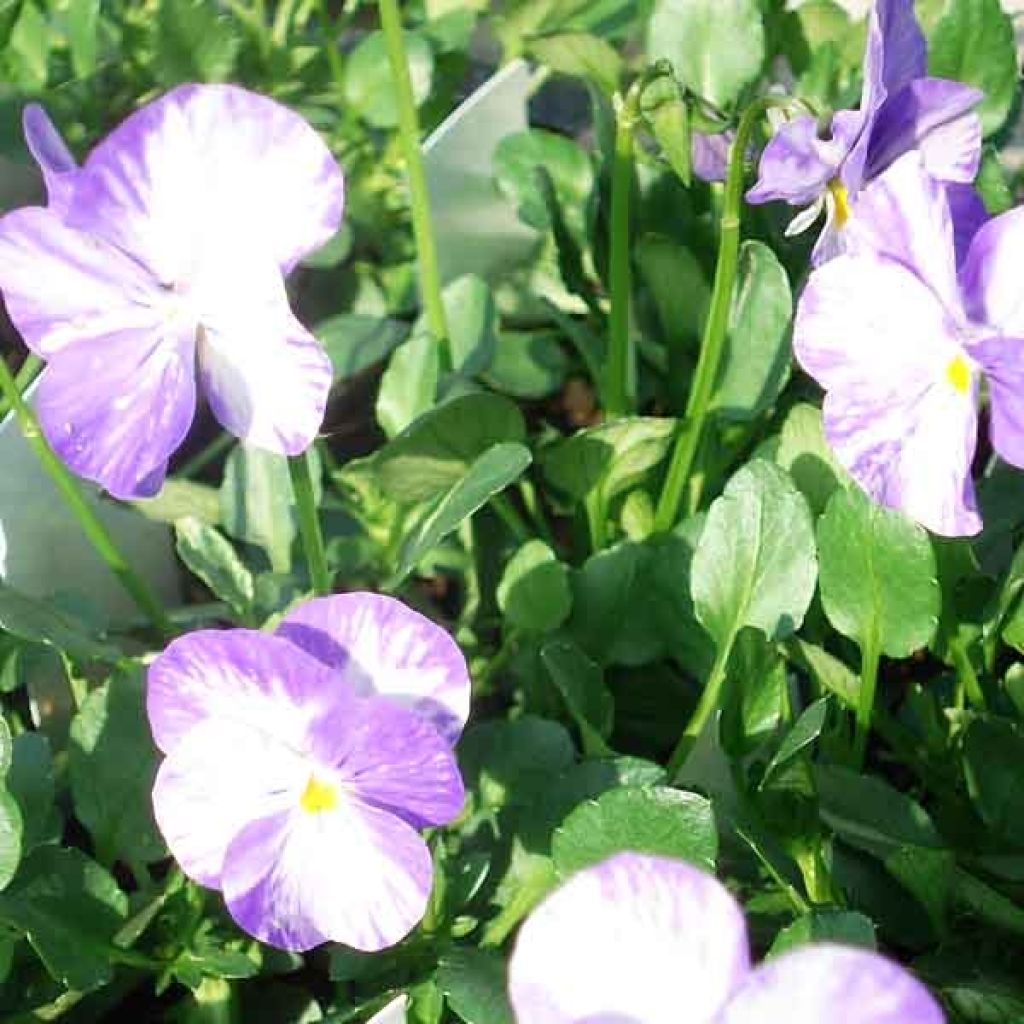

Viola cornuta Columbine
Viola cornuta Columbine
Viola cornuta Columbine
Viola, Violette cornue, Pensée vivace, Pensée à corne
This item cannot be shipped to the selected country
Delivery charge from €5.90
More information
Schedule delivery date,
and select date in basket
This plant carries a 12 months recovery warranty
More information
We guarantee the quality of our plants for a full growing cycle, and will replace at our expense any plant that fails to recover under normal climatic and planting conditions.
From €5.90 for pickup delivery and €6.90 for home delivery
Express home delivery from €8.90.

Does this plant fit my garden?
Set up your Plantfit profile →
Description
Viola cornuta 'Columbine' or Horned Violet is an easy, low-growing perennial with abundant and long-lasting flowering. Its numerous flowers bloom from April to September, brightening borders and balconies with their beautiful marbled petals. Against a white background, there are striking blue streaks ranging in intensity from lavender to indigo. Place it in partial shade or non-scorching sunlight and in moist and rich soil, and it will thrive.
The Columbine Viola is a spreading perennial that grows to a height and width of 15 to 20 cm (6 to 8in). It forms a base of oval, slightly toothed leaves with a dense, glossy green colour that remain throughout the winter. From this base emerge upright but flexible and delicate stems. At the top of these stems are pretty little flowers measuring 2 to 3 cm (1in). They have 5 petals: 2 overlap at the top, 2 spread out laterally, and the last one completes the bottom with sometimes a small 'dimple on the chin'. They are decorated with multiple blue marbling that stands out against their white background, ranging in intensity from lavender to indigo. A small yellow heart adds a final touch of cheerfulness.
This perennial, although not exceptionally long-lived, self-seeds spontaneously and can withstand cold weather. It prefers ordinary, not too dry soil and can tolerate some sunlight. It will thrive at the front of borders, between paving stones in a pathway, or on a damp rockery.
Viola cornuta 'Columbine' is the perfect companion for spring bulbs in pots and containers. Its range of blues contrasts beautifully with the yellow of daffodils and complements that of grape hyacinths. It extends the flowering season and provides blooms until early autumn. In borders, it lines pathways and captivates passersby with its varied patterns.
Report an error about the product description
Viola cornuta Columbine in pictures
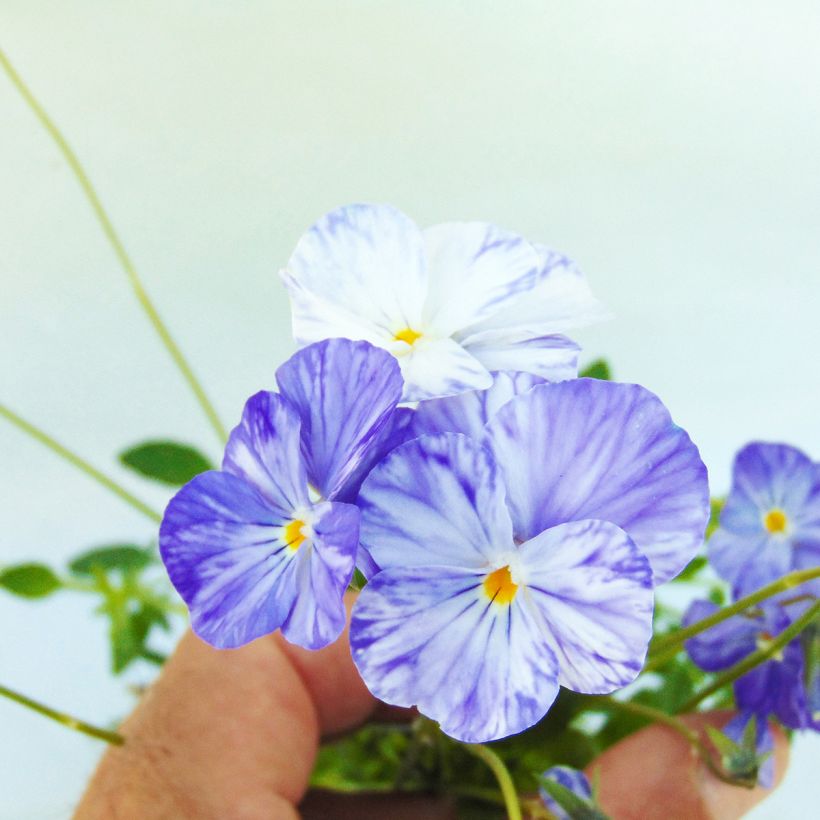

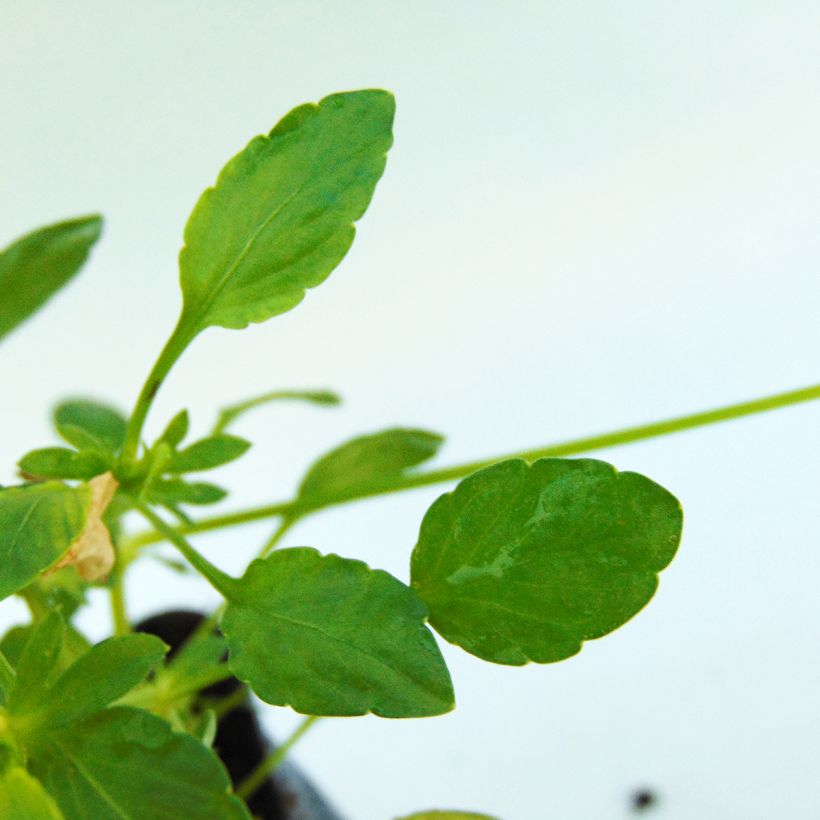

Flowering
Foliage
Plant habit
Botanical data
Viola
cornuta
Columbine
Violaceae
Viola, Violette cornue, Pensée vivace, Pensée à corne
Cultivar or hybrid
Other Viola - Violets
Planting and care
Viola Cornuta 'Columbine' prefers a sunny or semi-shaded position, sheltered from intense sunlight and dry winds. It ideally suits a rich, humus-rich, moist but well-drained soil. However, it can tolerate limestone and ordinary soils. It is a hungry plant, so it should be fed with liquid fertiliser during the growth period. Don't forget to water it if it is grown in a pot, but not excessively.
The Horned Violet is easy to grow and requires little maintenance. Just remove faded flowers to encourage new blooming. Then, you can lightly prune it to maintain a compact habit. Beware of slugs, snails, and aphids, as they are fond of it.
Planting period
Intended location
Care
-
, onOrder confirmed
Reply from on Promesse de fleurs
Spring flowering perennials
Haven't found what you were looking for?
Hardiness is the lowest winter temperature a plant can endure without suffering serious damage or even dying. However, hardiness is affected by location (a sheltered area, such as a patio), protection (winter cover) and soil type (hardiness is improved by well-drained soil).

Photo Sharing Terms & Conditions
In order to encourage gardeners to interact and share their experiences, Promesse de fleurs offers various media enabling content to be uploaded onto its Site - in particular via the ‘Photo sharing’ module.
The User agrees to refrain from:
- Posting any content that is illegal, prejudicial, insulting, racist, inciteful to hatred, revisionist, contrary to public decency, that infringes on privacy or on the privacy rights of third parties, in particular the publicity rights of persons and goods, intellectual property rights, or the right to privacy.
- Submitting content on behalf of a third party;
- Impersonate the identity of a third party and/or publish any personal information about a third party;
In general, the User undertakes to refrain from any unethical behaviour.
All Content (in particular text, comments, files, images, photos, videos, creative works, etc.), which may be subject to property or intellectual property rights, image or other private rights, shall remain the property of the User, subject to the limited rights granted by the terms of the licence granted by Promesse de fleurs as stated below. Users are at liberty to publish or not to publish such Content on the Site, notably via the ‘Photo Sharing’ facility, and accept that this Content shall be made public and freely accessible, notably on the Internet.
Users further acknowledge, undertake to have ,and guarantee that they hold all necessary rights and permissions to publish such material on the Site, in particular with regard to the legislation in force pertaining to any privacy, property, intellectual property, image, or contractual rights, or rights of any other nature. By publishing such Content on the Site, Users acknowledge accepting full liability as publishers of the Content within the meaning of the law, and grant Promesse de fleurs, free of charge, an inclusive, worldwide licence for the said Content for the entire duration of its publication, including all reproduction, representation, up/downloading, displaying, performing, transmission, and storage rights.
Users also grant permission for their name to be linked to the Content and accept that this link may not always be made available.
By engaging in posting material, Users consent to their Content becoming automatically accessible on the Internet, in particular on other sites and/or blogs and/or web pages of the Promesse de fleurs site, including in particular social pages and the Promesse de fleurs catalogue.
Users may secure the removal of entrusted content free of charge by issuing a simple request via our contact form.
The flowering period indicated on our website applies to countries and regions located in USDA zone 8 (France, the United Kingdom, Ireland, the Netherlands, etc.)
It will vary according to where you live:
- In zones 9 to 10 (Italy, Spain, Greece, etc.), flowering will occur about 2 to 4 weeks earlier.
- In zones 6 to 7 (Germany, Poland, Slovenia, and lower mountainous regions), flowering will be delayed by 2 to 3 weeks.
- In zone 5 (Central Europe, Scandinavia), blooming will be delayed by 3 to 5 weeks.
In temperate climates, pruning of spring-flowering shrubs (forsythia, spireas, etc.) should be done just after flowering.
Pruning of summer-flowering shrubs (Indian Lilac, Perovskia, etc.) can be done in winter or spring.
In cold regions as well as with frost-sensitive plants, avoid pruning too early when severe frosts may still occur.
The planting period indicated on our website applies to countries and regions located in USDA zone 8 (France, United Kingdom, Ireland, Netherlands).
It will vary according to where you live:
- In Mediterranean zones (Marseille, Madrid, Milan, etc.), autumn and winter are the best planting periods.
- In continental zones (Strasbourg, Munich, Vienna, etc.), delay planting by 2 to 3 weeks in spring and bring it forward by 2 to 4 weeks in autumn.
- In mountainous regions (the Alps, Pyrenees, Carpathians, etc.), it is best to plant in late spring (May-June) or late summer (August-September).
The harvesting period indicated on our website applies to countries and regions in USDA zone 8 (France, England, Ireland, the Netherlands).
In colder areas (Scandinavia, Poland, Austria...) fruit and vegetable harvests are likely to be delayed by 3-4 weeks.
In warmer areas (Italy, Spain, Greece, etc.), harvesting will probably take place earlier, depending on weather conditions.
The sowing periods indicated on our website apply to countries and regions within USDA Zone 8 (France, UK, Ireland, Netherlands).
In colder areas (Scandinavia, Poland, Austria...), delay any outdoor sowing by 3-4 weeks, or sow under glass.
In warmer climes (Italy, Spain, Greece, etc.), bring outdoor sowing forward by a few weeks.

































